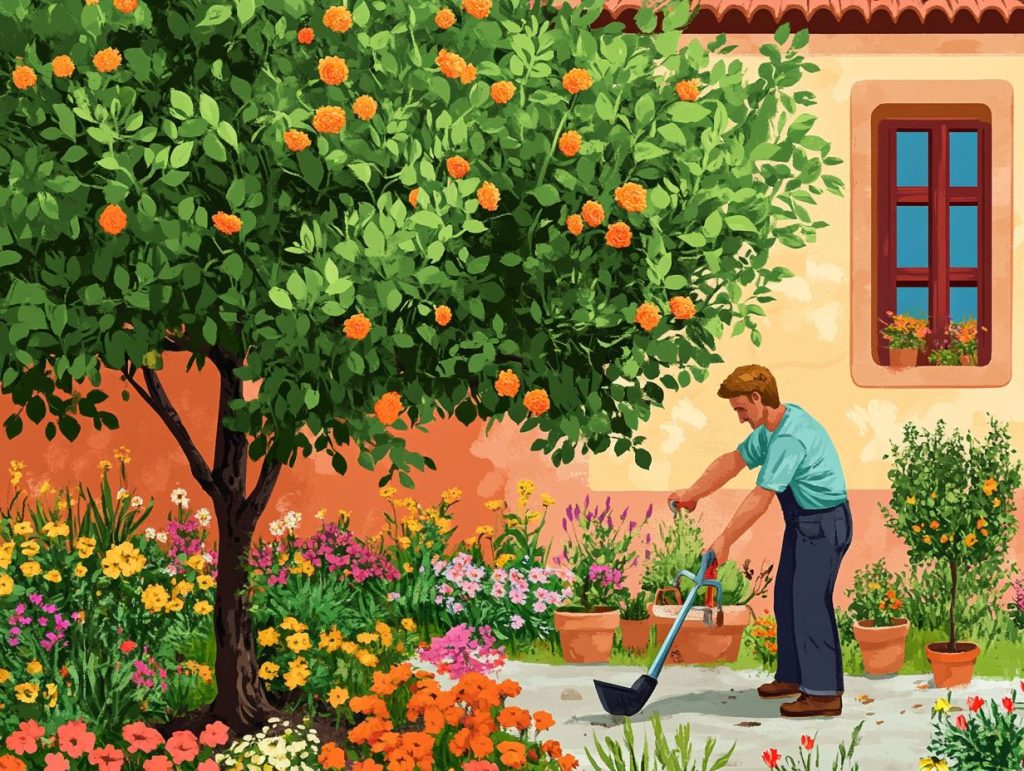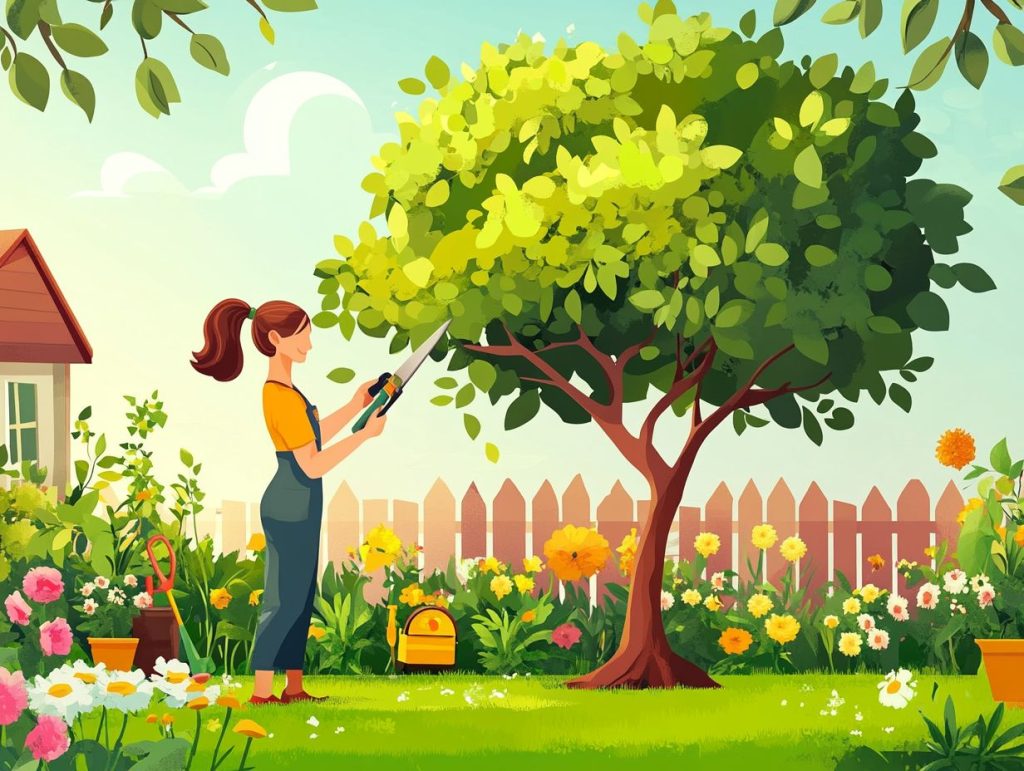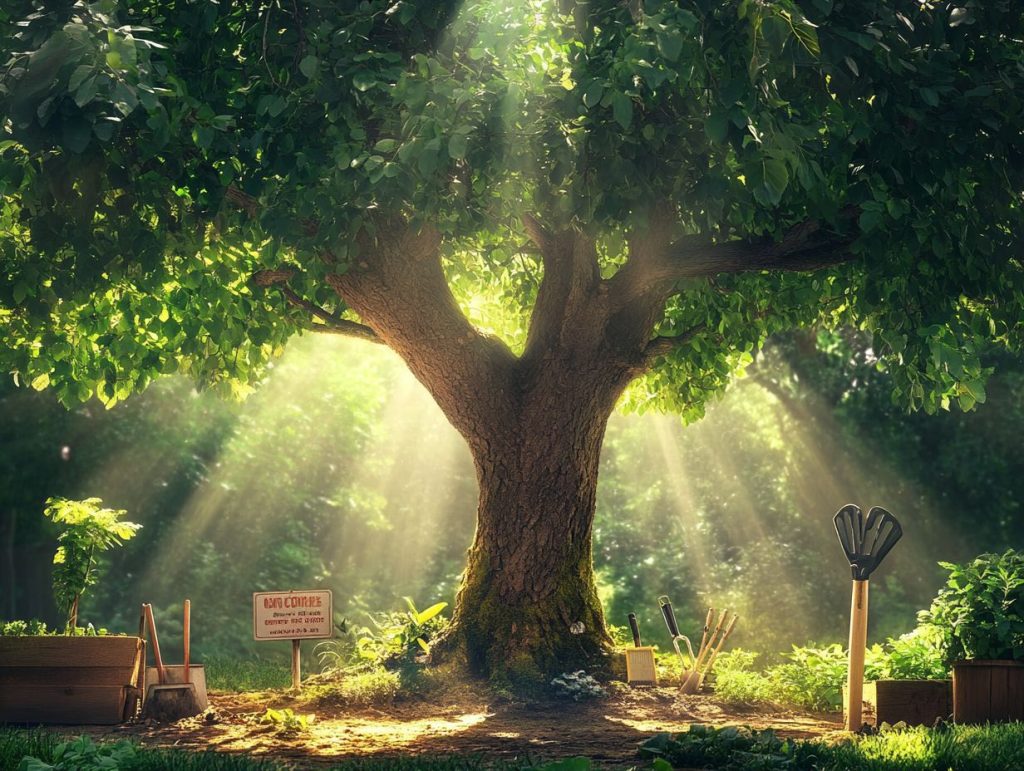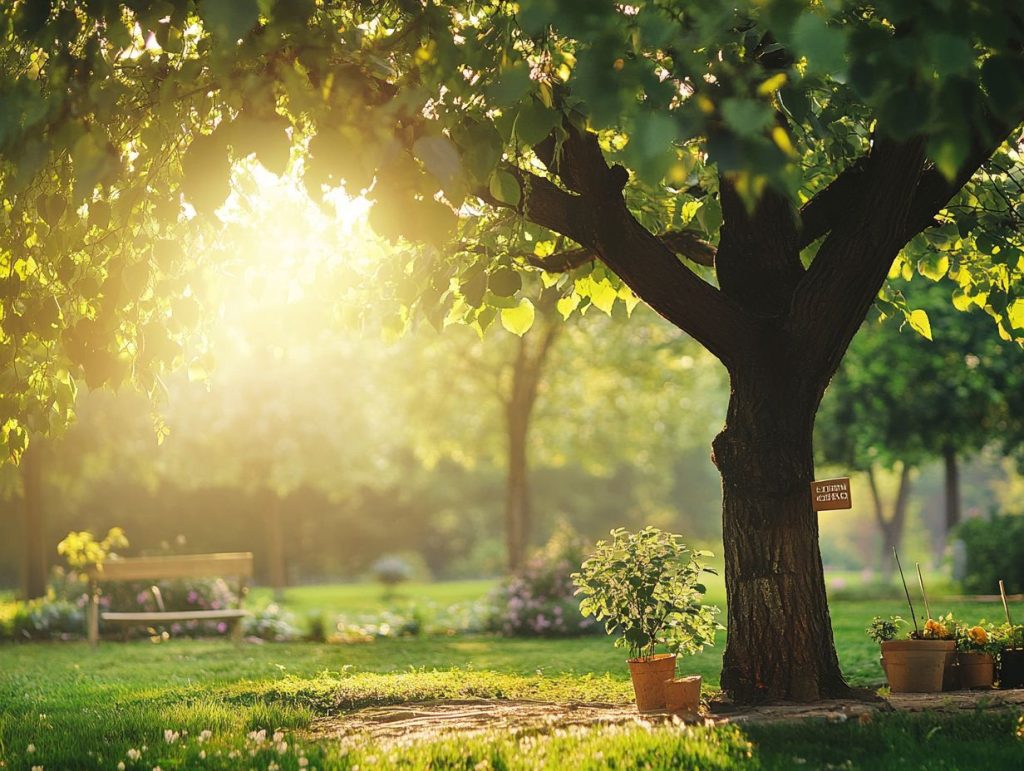An old Eastern proverb claims that your life is worthwhile if you have planted a single tree. We couldn’t agree more. Whether you have a small backyard tucked between the neighbouring houses or a sprawling garden in one of London’s suburbs, a tree is always a good choice.
But have you asked yourself why? Apart from esthetic reasons, what benefits does planting a tree bring to your property? And more generally, why are trees so crucial for the overall vibe of an urban or suburban area?
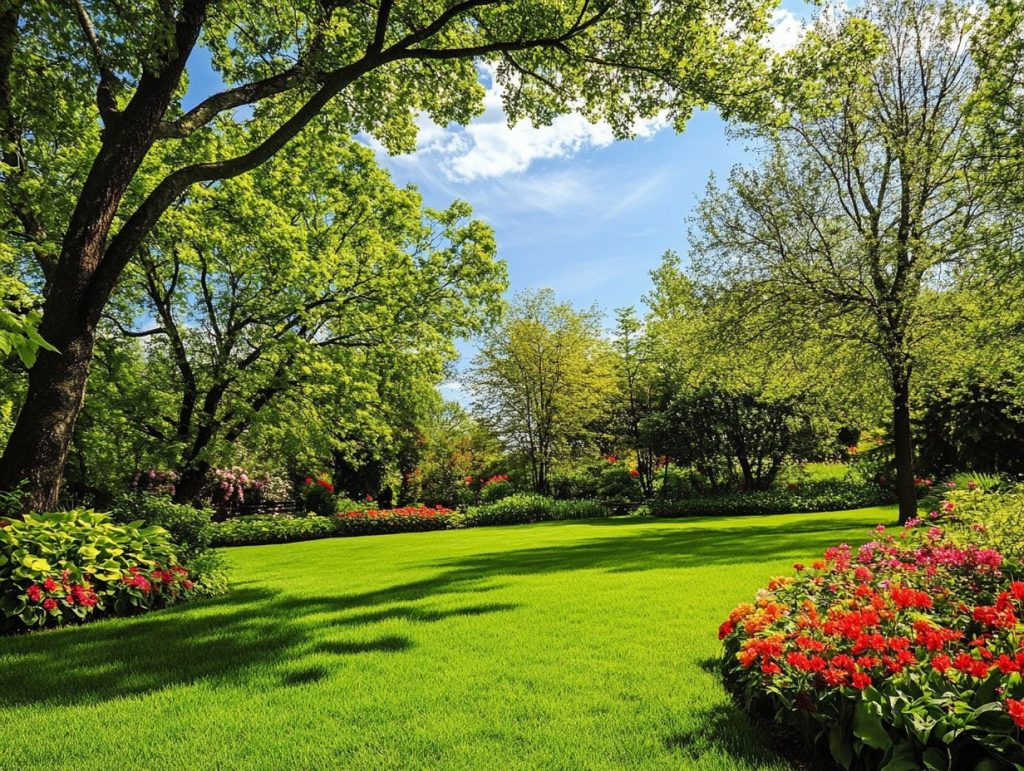
The Importance of Trees in Landscaping
When you think about landscaping, trees aren’t just there to look pretty; they play a crucial role in enhancing the environmental impact of your property.
Trees offer many benefits, such as improving air quality, enriching soil health, and promoting biodiversity. Furthermore, they significantly enhance curb appeal and are essential to sustainable landscaping practices.
By adding trees to your garden care routine, you’re not just making your outdoor space more beautiful—you’re also acknowledging your local ecosystem. This makes your property more inviting and better equipped to cope with climate changes.
Environmental Benefits
Trees are a punch when it comes to environmental health. They’re like nature’s air purifiers, cleansing the air and enhancing soil quality. By absorbing pollutants and releasing oxygen, they improve air quality, while their extensive root systems prevent soil erosion and help retain water.
These green giants are also essential for biodiversity. They provide habitats for all sorts of wildlife. Consider native trees like oaks and maples in temperate regions or mangroves along the coast. They create vital corridors that connect fragmented landscapes, allowing animals to migrate and flourish.
When you plant a mix of tree species, you foster an ecosystem where birds, insects, and small mammals can thrive. Trees offer shelter and delicious food sources like fruits and nuts, which help boost local wildlife populations and maintain the ecological balance.
Aesthetic and Functional Benefits
In addition to their environmental benefits, trees offer amazing aesthetic and functional advantages that can truly transform your outdoor living space. By strategically adding different types of trees to your landscaping, you can create a visually appealing environment that enhances your property’s curb appeal.
Think about it: different tree species, like vibrant red maples or delicate cherry blossoms, bring seasonal changes that catch the eye all year round, providing you with a dynamic backdrop. Flowering trees add splashes of colour and delightful fragrances and provide shade—perfect for those cosy relaxation spots you cherish.
To make the most of your space, consider smaller varieties or columnar trees that fit nicely without dominating the area. Using trees as focal points, along with thoughtfully placed shrubs and flowering plants, can guide the eye and improve the flow of your garden, making it both functional and beautiful.
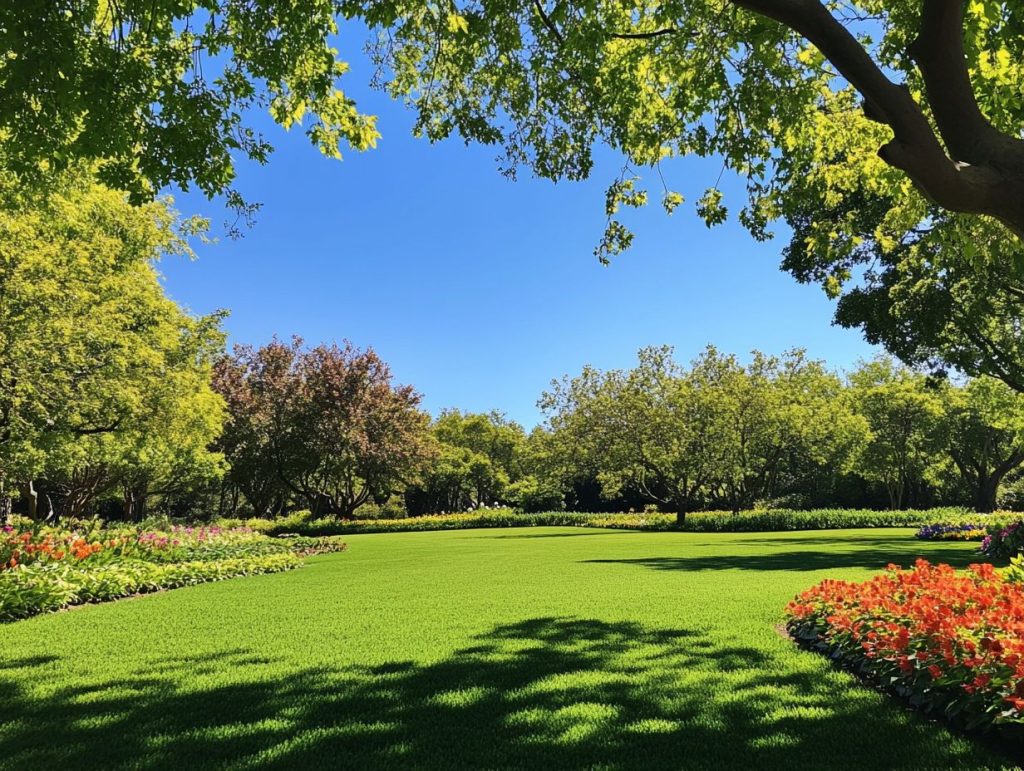
Choosing the Right Trees for Your Landscape
Choosing suitable trees for your landscape is essential if you want both beauty and ecological benefits. You will want to consider factors such as tree types, growth patterns, and how well they adapt to local conditions.
These elements are vital in creating a landscaping design that looks good and thrives over time.
Factors to Consider
When choosing trees for your landscape, it’s essential to consider factors like soil quality, how the trees grow, and what kind of maintenance they’ll need to thrive in the long term. Understanding the different characteristics of tree types will help you make wiser choices that fit your gardening style and sustainable landscaping goals.
For instance, checking your soil’s pH level and drainage capabilities can significantly impact how well your trees perform. Trees usually prefer specific pH ranges, so testing the soil in advance is essential. Good drainage is crucial, too, since it helps prevent root rot that can hinder growth.
Regular pruning encourages healthy branch development and reduces disease risk by allowing more airflow and sunlight. Furthermore, selecting suitable species—such as native trees that adapt well to the local environment—can lead to a lush landscape with less maintenance.
This all contributes to a vibrant ecosystem that enhances both beauty and biodiversity in your outdoor space.
Planting and Maintaining Trees in Your Lawn
Planting and caring for trees in your garden is a rewarding journey that requires attention and the right techniques.
Following best practices for planting and maintenance will help ensure your trees remain healthy and thrive, adding to your landscape’s overall beauty and vitality.
Proper Techniques and Best Practices
Proper techniques and best practices are crucial for tree health and growth when planting and maintaining them. You must ensure enough space for the tree roots, choose suitable planting locations, and apply mulch.
Getting the hole depth right is vital; it allows the roots to spread freely, which helps promote strong anchor points and prevent root girdling. Furthermore, setting up a structured watering schedule helps young trees establish themselves and conserve water effectively, making them more resilient during dry spells.
And mulch? It’s not just attractive to look at. It’s essential for retaining soil, regulating temperature, and keeping pesky weeds at bay, creating the perfect little microenvironment. These practices are fundamental not just for the longevity and vitality of your trees. Still, they also contribute to a more sustainable landscape design, boosting your garden’s overall appeal and functionality.
Benefits of Trees for Your Lawn
When you incorporate trees into your garden, you enhance its beauty and reap many benefits, such as improved soil quality and energy savings.
These advantages make trees a fantastic addition to any landscape. They help promote environmental sustainability and offer health benefits for everyone living nearby.
Improved Soil Quality
Trees are essential for improving soil quality, mainly thanks to their root systems. They help prevent erosion and boost nutrient cycling, which is great for your landscape.
The intricate network of tree roots stabilises and enhances the soil by creating pores that allow airflow and water to seep in. As these roots grow, they break down organic matter and release vital nutrients into the soil—perfect for anyone interested in organic gardening.
With enhanced soil quality, you promote a wide range of microorganisms, worms, and insects that work together to make nutrients available and keep your plants healthy. Furthermore, choosing plants that thrive in this healthy soil becomes straightforward, leading to less maintenance and a more resilient garden ecosystem.
Reduced Energy Costs
One of the best perks of having trees in your garden is that they can help reduce energy costs by providing natural shade. A well-planned tree canopy can also help lower your air conditioning bills during those hot months while boosting your property’s environmental impact.
Research shows that strategically placed trees can reduce energy consumption by up to 30%. That’s some serious savings on your electricity bills! By thoughtfully designing your outdoor spaces with trees, you’re making your home more comfortable and embracing sustainable design principles that promote eco-friendly landscaping.
This approach benefits you by supporting biodiversity, improving air quality, and helps cool urban areas. It’s a win-win for you and the community. In the end, adding trees is a simple yet effective way to live a more sustainable lifestyle while soaking in the beauty of nature.
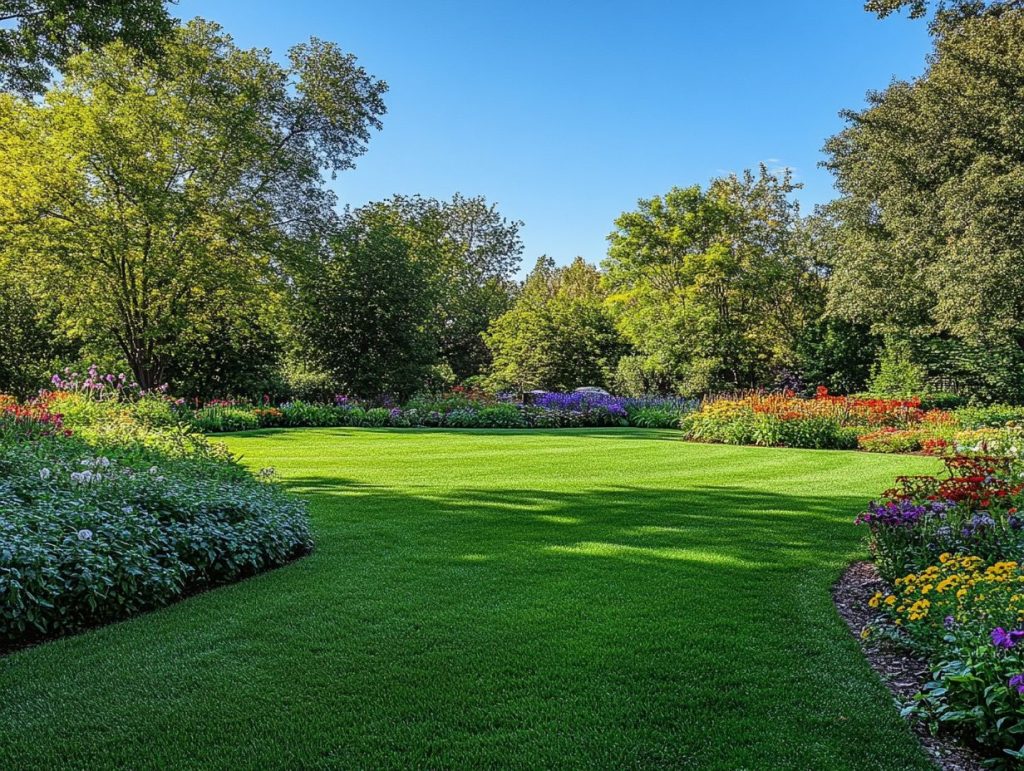
Common Mistakes to Avoid When Adding Trees to Your Landscape
When adding trees to your landscape, it’s crucial to avoid common mistakes that could jeopardise their success and longevity.
Awareness of these pitfalls will help you plan effective landscaping projects prioritising tree preservation and maintenance.
Potential Pitfalls and How to Avoid Them
Understanding the potential pitfalls when planting trees is crucial for ensuring their health and success over time. You might encounter common mistakes such as improper planting depth, neglecting the tree roots, or not assessing the tree’s long-term growth potential.
Each of these issues can seriously impact a tree’s ability to thrive. For example, if you plant a tree too deep, its roots could suffocate. If you ignore those vital roots, you might hinder the tree’s ability to absorb nutrients.
Remember that trees have specific growth requirements that you need to consider. If you don’t evaluate a tree’s size at maturity, you could end up with overcrowding and poor air circulation.
Regular maintenance practices—such as mulching, watering just right, and watching for pests—are essential for promoting healthy growth. By addressing these pitfalls carefully, you can significantly enhance your landscape design, making it visually appealing and sustainable so trees can flourish for generations.
